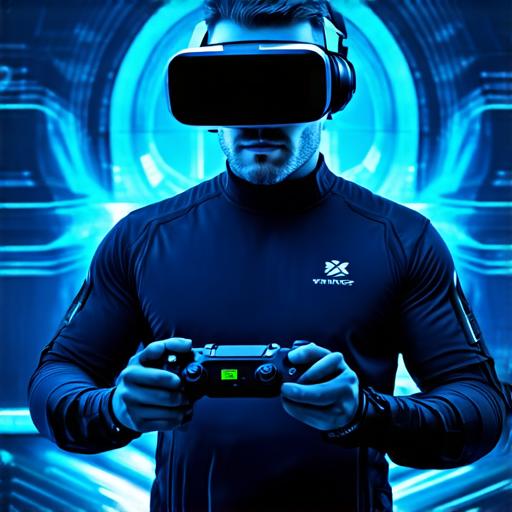
How Virtual Reality Operates
Key Components of Virtual Reality Systems
Virtual reality systems consist of several key components:
- Headset
- Tracking System
- Computer Hardware
- Content Creation Tools
The headset is the most important component of a VR system. It provides an immersive visual and audio experience by displaying stereoscopic images and playing binaural audio through built-in headphones or external speakers. The quality of the headset can significantly impact the user’s overall experience, so it is essential to choose one that is comfortable, lightweight, and has high resolution displays.
The tracking system is responsible for monitoring the movement of the user’s head and body within the virtual environment. It uses sensors such as gyroscopes, accelerometers, and magnetic fields to determine the user’s location and orientation in real-time. This information is then used to update the visual and audio elements of the VR system accordingly.
The computer hardware required for a VR system depends on the complexity of the application and the target platform. A high-end gaming PC or workstation with a dedicated graphics card may be sufficient for simple VR applications, while more advanced systems may require powerful servers or cloud-based solutions.
Content creation tools such as game engines, 3D modeling software, and animation software are essential for creating interactive VR experiences. These tools provide a range of features and tools that allow developers to design, develop, and test VR applications quickly and efficiently.
How Virtual Reality Works

Virtual reality works by simulating a 3D environment that the user can interact with using specialized input devices such as hand controllers or motion capture suits. When the user moves their head or body, the tracking system updates the position of the virtual camera and adjusts the perspective of the visual elements accordingly. This creates an immersive experience that tricks the brain into believing that it is in a real environment.
One of the key principles of VR is stereoscopic display, which involves rendering two slightly different perspectives for each eye. This creates depth perception and enhances the sense of immersion. Additionally, VR systems often use binaural audio to simulate the way sound is perceived in real life, further enhancing the overall experience.
Common Misconceptions and Challenges
One common misconception about VR is that it requires specialized skills or training to use effectively. While some applications may be more complex than others, most VR systems are designed to be user-friendly and accessible to a wide range of users.
Another challenge facing VR developers is the high cost of equipment and software. VR hardware and content creation tools can be expensive, which limits the accessibility of VR technology for some businesses and individuals. However, as the market continues to grow and competition increases, we can expect prices to come down over time.
Finally, designing and developing VR applications can be a complex and challenging process. Developers must consider factors such as motion sickness, comfort, and usability when creating VR experiences. Additionally, creating content that is engaging and immersive can be difficult, requiring a deep understanding of human psychology and interaction design.
Summary
Virtual reality technology has the potential to revolutionize many industries, from gaming and entertainment to education and healthcare.


